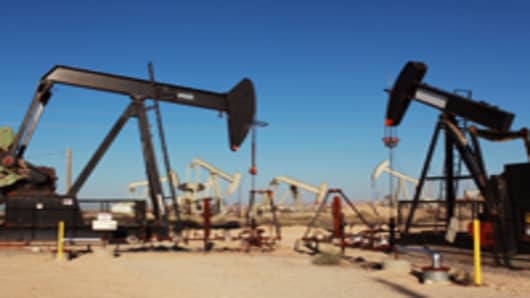While Asia's two largest economies shadow-box in the East China Sea, unresolved territorial claims in resources-rich waters immediately south are complicating oil and gas developments aimed at meeting the region's rising energy needs.
China and five other countries – Vietnam, the Philippines, Taiwan, Brunei and Malaysia – claim ownership to all or parts of the strategically-vital South China Sea, which provides 10 percent of the global fisheries catch and carries $5 trillion in ship-borne trade, equivalent to half the world's shipping tonnage.
"With Asia's growing appetite for oil and natural gas in deepwater areas, tensions have recently intensified between China and its neighbors Vietnam and the Philippines," said HSBC analysts led by Thomas Hilboldt, Asia-Pacific Head of Oil, Gas & Petrochemicals Research, in a report on September 14.
Diplomats are scrambling to ease tensions between China and Japan, believed to be the worst in decades, over disputed islands – Senkaku in Japan and Diaoyu in China – in the East China Sea. Competing territorial claims in the South China Sea are adding to the strained regional geo-political backdrop, creating a legal minefield for energy producers who're considering, or who already have, bought stakes in prospective oil and gas blocks in the area.
"Oil majors contemplating investment need a primer in international law as well as an appreciation of the historical and political background before they venture into this region," wrote Tim Taylor QC, a partner at international law firm SJ Berwin, in a guest post in the Financial Times' 'beyondbrics' column on September 19.
ExxonMobil, which has acquired Vietnamese blocks in the South China Sea, said last October it found oil and gas in its second exploration well, the Wall Street Journal reported in June.
Chinese state-owned energy giant CNOOC and the Vietnamese and Philippine national oil companies have offered international investors oil acreages in disputed waters in the South China Sea. That's seen by some as a bid to further their national primacy and raises questions about who gets what if an asset is seized should relations deteriorate.
Parag Khanna, senior research fellow at New America Foundation, calls it "commercial nationalism"— where commercial agreements are created "to asset de-facto sovereignty like in Kurdistan and South Sudan," raising expropriation risks.
A far more practicable solution would be the creation of "a shared technocratic special economic zone that ensures transparent profit-sharing." Achieving this, Khanna argues, is not difficult. "It's politics and national pride that's getting in the way."
The lack of a coherent framework of international rules and boundaries complicates matters for businesses. The United Nations has attempted to reach an inclusive multi-lateral framework but with little success.
Law of the Sea
The U.N. Convention on the Law of the Sea (UNCLOS) adopted in 1996 established a 200 nautical mile Exclusive Economic Zone from the shorelines of all coastal states on the South China Sea, granting them sovereignty over all the resources within this area, including the sea and seabed. But UNCLOS only required countries with overlapping claims to resolve them through good faith negotiations, and has yet to resolve any ownership disputes.
In May 2009, the U.N. Commission on the Limits of the Continental Shelf (CLCS) set a deadline for the submission of claims for extended continental shelves beyond 200 nautical miles. However, a joint submission by Vietnam and Malaysia resulted in a protest by China, stoking the most recent tension in the South China Sea.
China has continued to assert its sovereignty in the South China Sea using the so-called 'Nine-Dash Line', a U-shaped delineation based on historical records, apparently dating back hundreds of years.
"A legally binding supranational agreement to guide future development has numerous obstacles," HSBC noted, though "CNOOC is considered to be well-positioned to benefit from significant upstream discoveries in the disputed sea."
The Chinese energy state-owned giant already has a sizeable offshore footprint in the region. CNOOC has "significant exposure," according to HSBC, "including resources in disputed areas." At the end of 2011, 18 percent of CNOOC proved reserves were located in the Western South China Sea and 16.3 percent in the Eastern South China Sea.
In 2011, 15.2 percent of the oil and gas produced by CNOOC came from the Western South China Sea and 16.2 percent from the Eastern South China Sea. "While CNOOC's production is located in undisputed areas, CNOOC Corp's recently auctioned nine blocks are within waters contested by Vietnam, thus drawing protests from PetroVietnam and Vietnam's government."
It's not hard to see why southeast Asian nations and, China in particular, are eager to stake their claim to overlapping maritime territories given potentially vast hydrocarbon reserves lying in rock formations in depths of around 1,500 meters.
More than ten oil basins in the South China Sea's continental shelf hold an estimated 23 to 30 billion tons in oil reserves and 20 trillion cubic meters of natural gas, according to China's Ministry of Land and Resources. That's enough to supply China's hydrocarbon demand for more than 50 years based on 2011 crude and natural gas consumption, explaining why, according to HSBC, "China is so intent on resource ownership rights."


